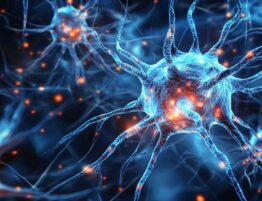This procedure is a highly informative and safe examination method that allows you to visualize the structure and functional changes of the cerebral arteries, determine the anatomy of the location of the vessel, identify structural anomalies, determine the width of the lumen, and the degree of stenosis. When examining blood vessels, magnetic resonance imaging is performed in a special mode, which distinguishes mobile tissue (blood) from immobile surrounding tissue, making it possible to obtain an image of the vessels without using a contrast agent. Special programs allow you to create a three-dimensional image of the vascular bed of the investigated area.
Benefits of MR angiography of cerebral vessels:
- Unlike CT angiography, the patient is not exposed to ionizing radiation.
- It can be carried out to patients of any age, starting from infants, and including pregnant women from the 13th week and lactating.
- In magnetic resonance angiography, contrasting is not used; therefore, there is no need for a vein puncture, placement of a catheter, and associated discomfort;
- Due to the absence of the need for the introduction of contrast, the method is indispensable when examining people with impaired renal function, thyroid gland, prone to allergic reactions, lactating, and pregnant women.
- Before CT angiography, preparation is required (tests, doctor’s consultation, and, if indicated, samples with iodine); MR angiography does not require preparation.
- MR angiogram of cerebral vessels, if necessary, can be repeated several times without harm to the patient’s body.
- The determining factor for the normal productive functioning of the brain is its good blood supply. The brain substance needs a large number of nutrients and oxygen, and with a lack of them, brain activity is impaired. Intracranial vessels are directly involved in the blood supply to the brain, and the vessels of the neck are the only way for blood to flow to it. Therefore, the assessment of the state of these structures plays an important role in the diagnosis of various disorders of brain activity.
Preparations and types of MR angiogram
Before doing tomography, you need to read the information below:
- Preparation for magnetic resonance angiography of cerebral arteries
The patient does not need to prepare for MR angiography of the head vessels. There is no need to change the habitual lifestyle and diet; all prescribed medications can be taken.
- Conducting research for magnetic resonance angiography of cerebral arteries
The procedure for examining MR angiography of cerebral vessels takes about 20 minutes. The patient is in the tomograph in the supine position. It is crucial to remain still during the examination, as the quality of the images is greatly reduced while moving.
Types
Cerebral angiography of the cerebral vessels is done by taking a series of images after injecting an iodine-containing drug that illuminates the tissue. Methods of carrying this out include X-ray and MR-angiography on a magnetic resonance imager. The risk of manipulation depends on the method of administration of the contrast agent.
Depending on the scope of the study, cerebral angiography is divided into two types:
- total (general);
- selective (locally).
- Total cerebral. Its angiography is performed when it is necessary to obtain information about the entire vascular system of the brain and skull tissues. Examine the rate of blood flow and nutrition of the brain, and find the location of the tumor or a place that obstructs blood flow. This examination is done under general anesthesia, and a catheter is inserted to deliver contrast through the femoral or brachial artery. Simultaneously with the diagnosis, aneurysm removal or other necessary operation can be performed.
- Selective cerebral. Its resonance angiography involves examining a specific area of the head. This type of examination is prescribed when pathology was previously identified and the data need to be clarified. In selective angiography, a staining agent is injected into the artery responsible for the blood supply to the affected area.
Distinguish between direct and indirect access when performing radiopaque angiography. In the first case, the contrast agent is injected directly into the carotid artery; in the second, access is performed through the femoral artery using a catheter. Cerebral angiography helps prevent stroke and prescribes prophylaxis of vascular pathologies. The diagnosis is prescribed by a neurologist or neurosurgeon.
Indications and risks of MR angiogram in cerebral arteries
To prepare yourself for the procedure, study the details of how it happens and what you can learn from it.
- Magnetic resonance imaging in angiography mode shows the following pathologies:
- stenosis;
- atherosclerosis;
- tumor;
- malformations;
- blood clots;
- aneurysms.
MRI angiography is performed without contrast, except for the diagnosis of the detected tumor. In the case of a tumor pathology study, the contrast agent brighter visualizes the contour of capillaries, veins, arteries and provides complete information about the extent of the spread of the process.
- The state of the vessels is checked not only on the MRI machine but also using the X-ray method with the obligatory administration of a contrast agent.
- It can be an X-ray machine or a computed tomography.
- Thus, the procedure involves radiation exposure and the use of contrast; this is how MRI differs from angiography.
- Each examination has its indications and contraindications, so only the doctor determines what is best for the patient, MRI or angiography.
- The difference between MRI angiography and MRI lies in the subject and purpose of the examination.
MRI of the brain in angiography mode visualizes pathologies of the structure of the brain and blood vessels simultaneously. This method is:
- safe;
- non-invasive;
- highly informative;
- Magnetic resonance angiography helps measure blood flow;
- detect pathological changes at an early stage;
- determine the tactics of treatment.
Risks associated with MR angiogram
There are relatively few complications associated with MR angiography.
The most common possible complications are:
- a feeling of warmth;
- an unpleasant taste in the mouth, which can occur during injection of contrast medium;
- contrast hypersensitivity or even an allergic reaction is rare;
- during preparation for the study, the doctor should ask the patient about the presence of renal failure. In the case of a positive response from the patient, it may be necessary to refuse the use of a contrast medium.
FAQ
- What is better CT or MRI angiography?
Both CT angiography and MR angiogram of the brain are informative. It is believed that a CT scan of cerebral vessels will better show aneurysms and circulatory disorders in the acute phase and vascular disorders after TBI. On the MRI of the cerebral vessels, deformities of the great vessels of the head will be best seen.
- Which doctor can describe an MRI?
Only experienced specialists – qualified radiologists can describe the obtained images. They carefully study the picture, determine the pathology, and compare it with healthy tissues.
- How is an MR angiogram performed?
You lie down in a large tunnel tube which is an MRI scanner. To make your blood vessels easier to see, a contrast dye may be added to the bloodstream. In this way, MRA is carried out.
- How long does an MRA last?
It depends on which part of the body you are examining. In general, scanning takes from an hour to two. MR angiography of the cerebral vessels takes about 20 minutes. It is very important not to move during scanning, otherwise, the pictures may not be clear.













Please, leave your review
Write a comment: